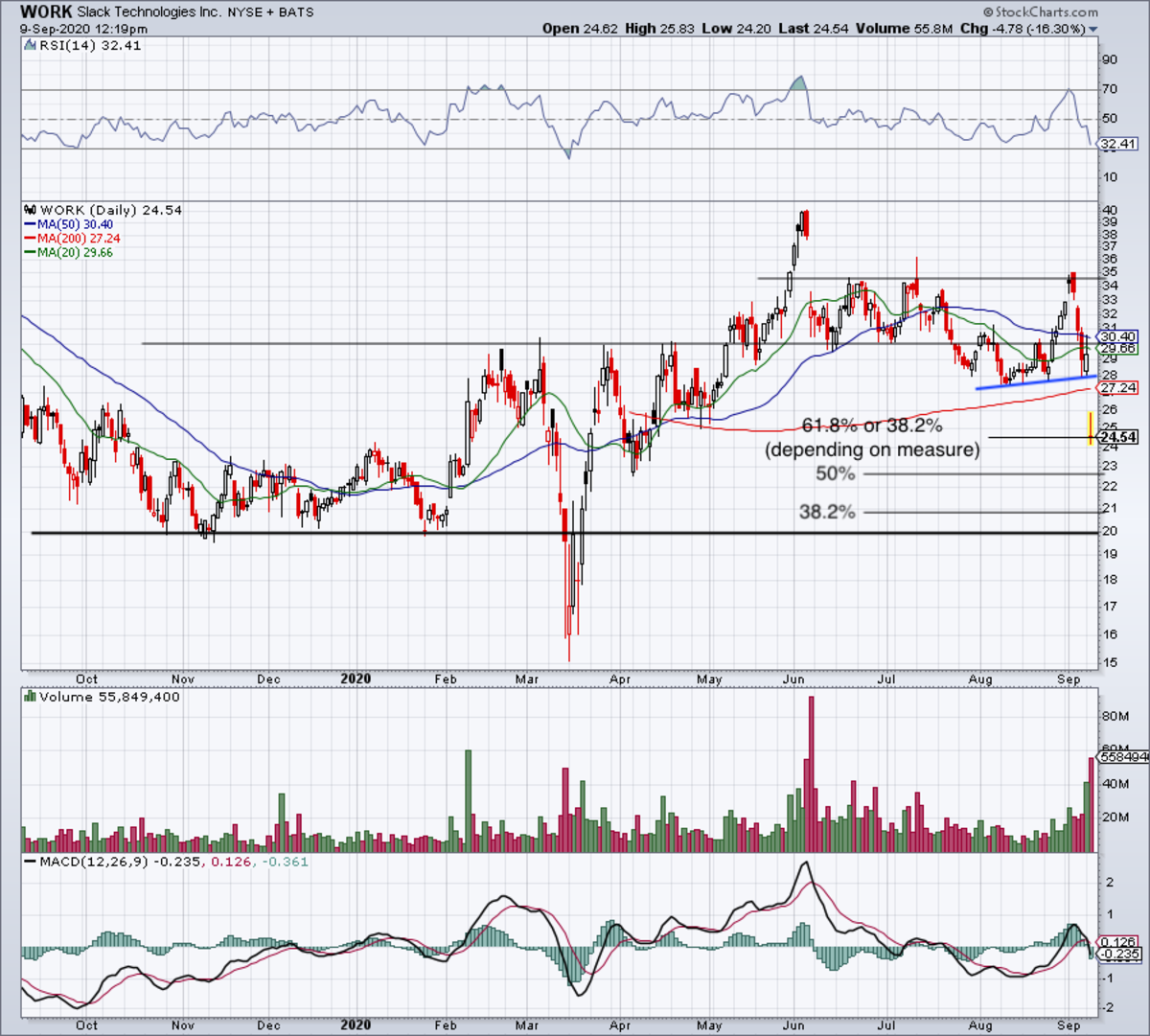
The company still has robust growth as it continues to swing its bottom line in the right direction while growing the top line. It seems like Wall Street decided to focus on one metric - billings - and is basing the entirety of Slack stock on that.
Slack stock falling drivers#
“Paid Customer growth - which is the single most important driver of the business over the long term - accelerated in Q2, up 30% year-over-year … One of the drivers of this acceleration was Slack Connect … We ended the quarter with more than 380,000 connected endpoints, up more than 200% year-over-year, and now more than 52,000 Paid Customers use Connect, up 160% year-over-year.” A Deeper Look at Slack Stock In total, Slack reported 8,000 new customers, which was up 60% year-over-year.ĬEO Stewart Butterfield expanded upon this in the press release: The company also reported 87 new customers with recurring annual revenue in excess of $1 million, up 78% year-over-year. Slack reported 985 paid customers with $100,000 or more in recurring annual revenue.

I also like the customer additions during the quarter. I like that it provided slightly above-consensus guidance for full-year revenue and better-than-expected earnings guidance. I like that the company beat on earnings and revenue. That is worth a 14% overnight haircut, totaling billions in market cap? Still, I think it’s a mistake to throw away all of the good things in the quarter because Slack’s billings total came up shy of expectations. Revenue of $215.9 million beat expectations by roughly $6.7 million after growing close to 50% year-over-year.īillings of $218.2 million came up short of estimates, which ranged anywhere from $226.3 million to $236 million.

The company reported breakeven non-GAAP earnings, which was 3 cents ahead of consensus expectations. To me, that’s a dip to buy, as key catalysts remain in place. At its post-earnings low, it was down 31%. For bulls, that likely seemed like a good enough risk/reward to get long Slack.Ĭollectively, Slack stock is down almost 27% from its highs earlier this month. From peak to trough during that four-day stretch, shares slid 20%. In the four trading sessions leading up to earnings, shares fell 14.5%. That’s as the novel coronavirus keeps traditional work spaces in disruption.īeyond that, Slack stock had already declined in the days leading up to the report. Not only did the company report a solid result, but Slack still has secular growth drivers in play. Shares shed 13.9% that day and the dip was surprising for several reasons. Slack shares had ended Wednesday up 8% ahead of the earnings report.Source: Sundry Photography / Slack now has more than 720 business customers who pay more than $100,000 each year for the service, up 75% from the prior year. The company plans to spend more than 50% of its revenue on sales and marketing in the coming quarters as it works to win over more large, paying business customers, which it relies on for revenue. Chief financial officer Allen Shim said on a call with analysts Wednesday that the yearly loss will be due in part to an increase in sales and marketing expenses. But Slack also said it now expects to lose between $0.40 and $0.42 per share for the year, worse than analysts had estimated. The company posted a net loss of $0.14 per share in the July quarter, better than Wall Street analysts had expected. Like many of its tech peers, Slack’s revenue is growing, but the company remains unprofitable. Slack, a workplace messaging app used by companies such as IBM (IBM), Lyft (LYFT) and CNN, made its Wall Street debut in June after choosing to list its existing shares directly on a stock exchange rather than going through a traditional public offering. Slack said Wednesday that its results were hurt by $8.2 million of credits from the service disruptions during the quarter. Its revenue in the most recently completed quarter would have been even higher if not for some lengthy service outages. The company is now projecting total revenue for the year to increase by 51% to 52%, a notable decline from last year when revenue grew 82%.

That was slower than the 67% growth it generated in the first three months of its fiscal year. Slack reported revenue of $145 million in the quarter, an increase of 58% from the same period a year earlier. The company’s sales growth has been slowing, a trend it expects to continue. The stock decline came even as Slack boosted its outlook for the year. Shares of Slack (WORK) plunged 15% in after-hours trading Wednesday following the company’s first earnings report as a public company. Slack’s honeymoon on Wall Street may officially be over.


 0 kommentar(er)
0 kommentar(er)
